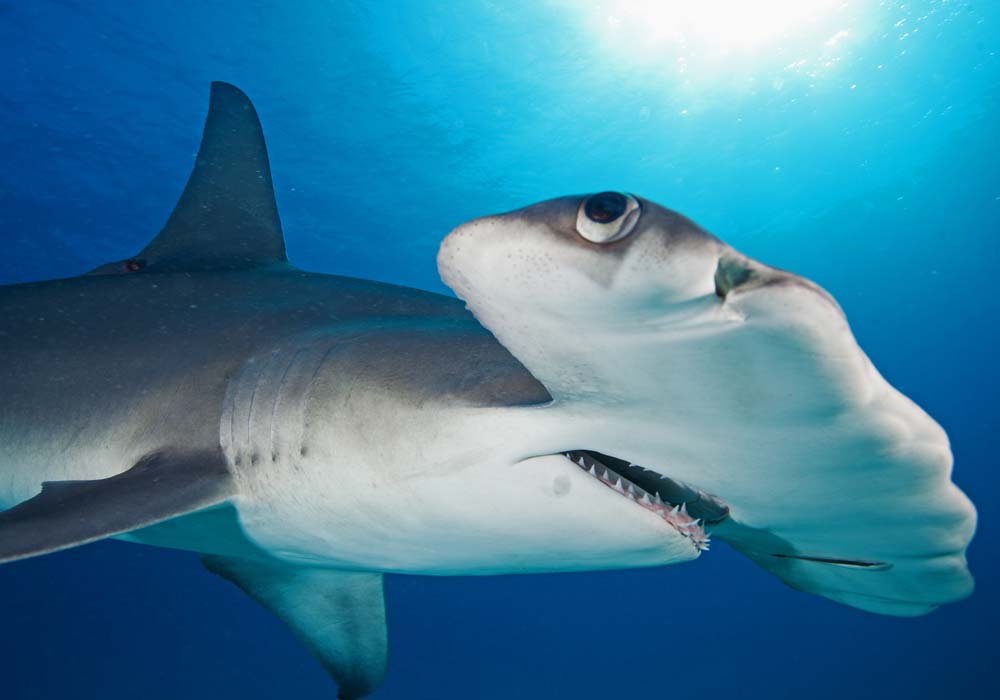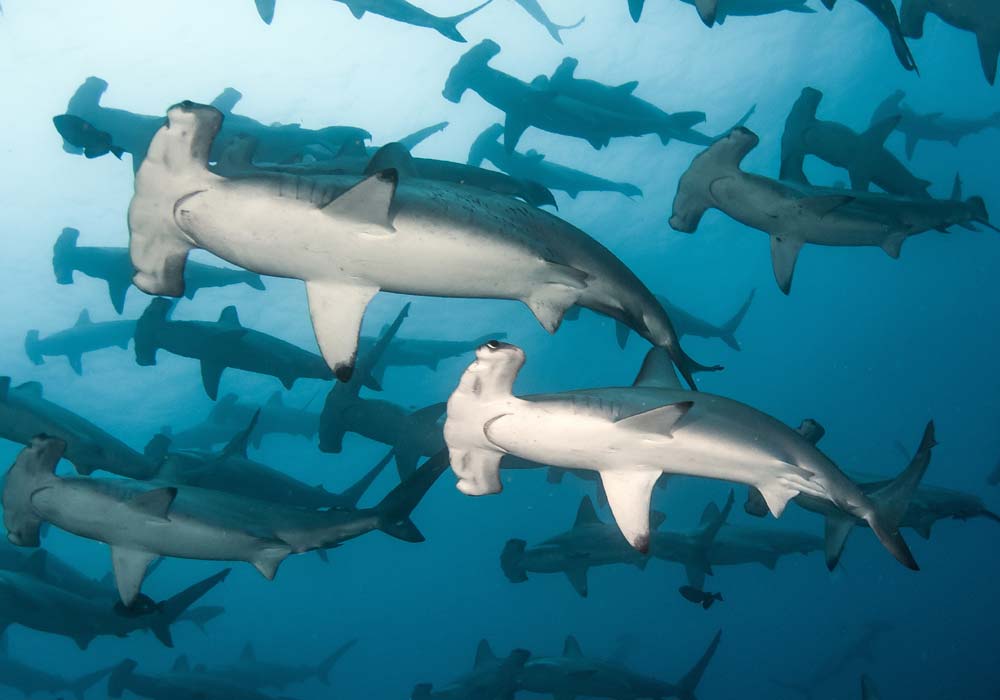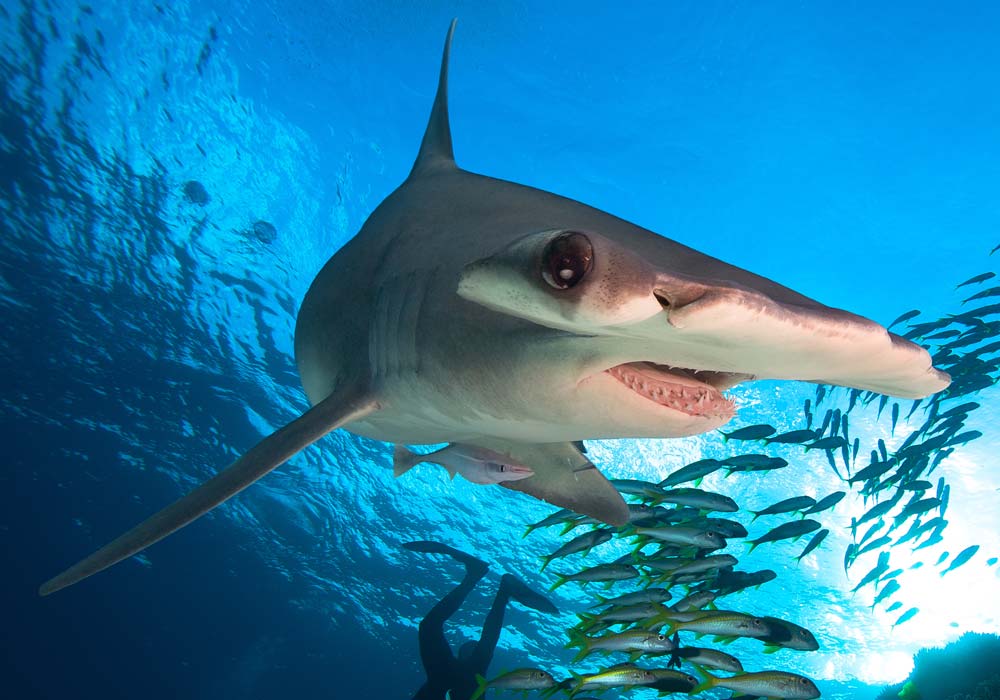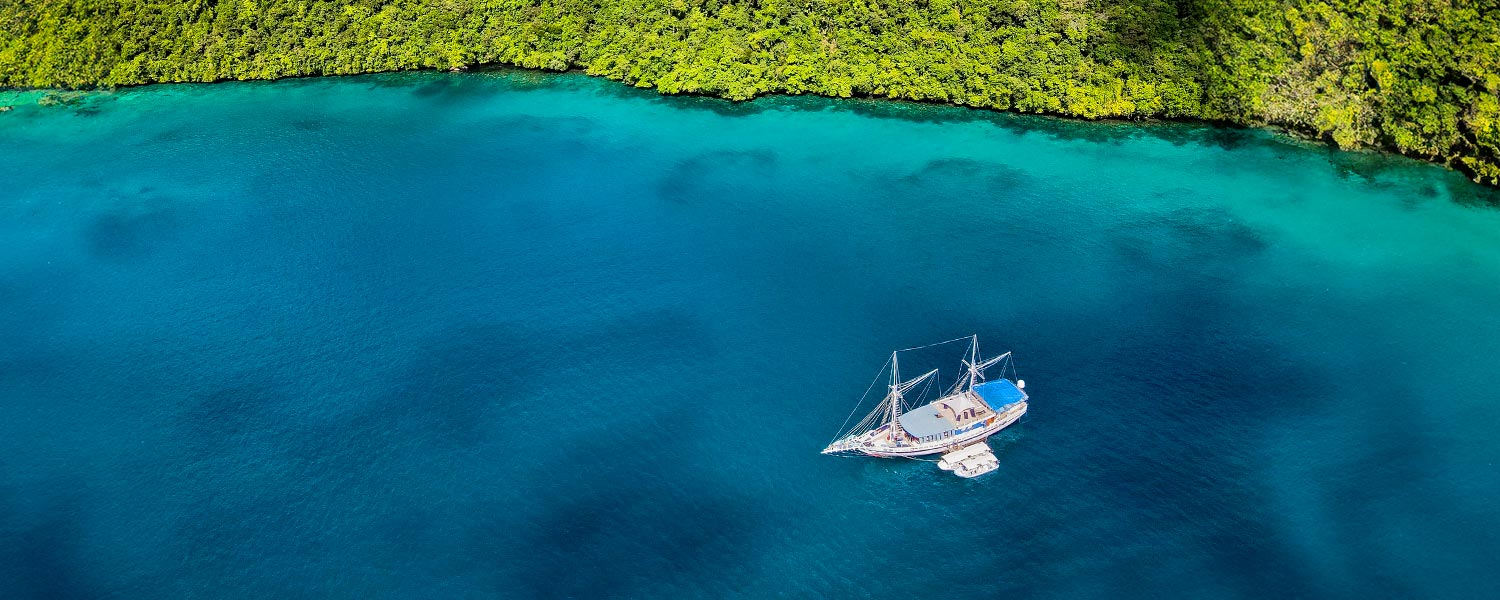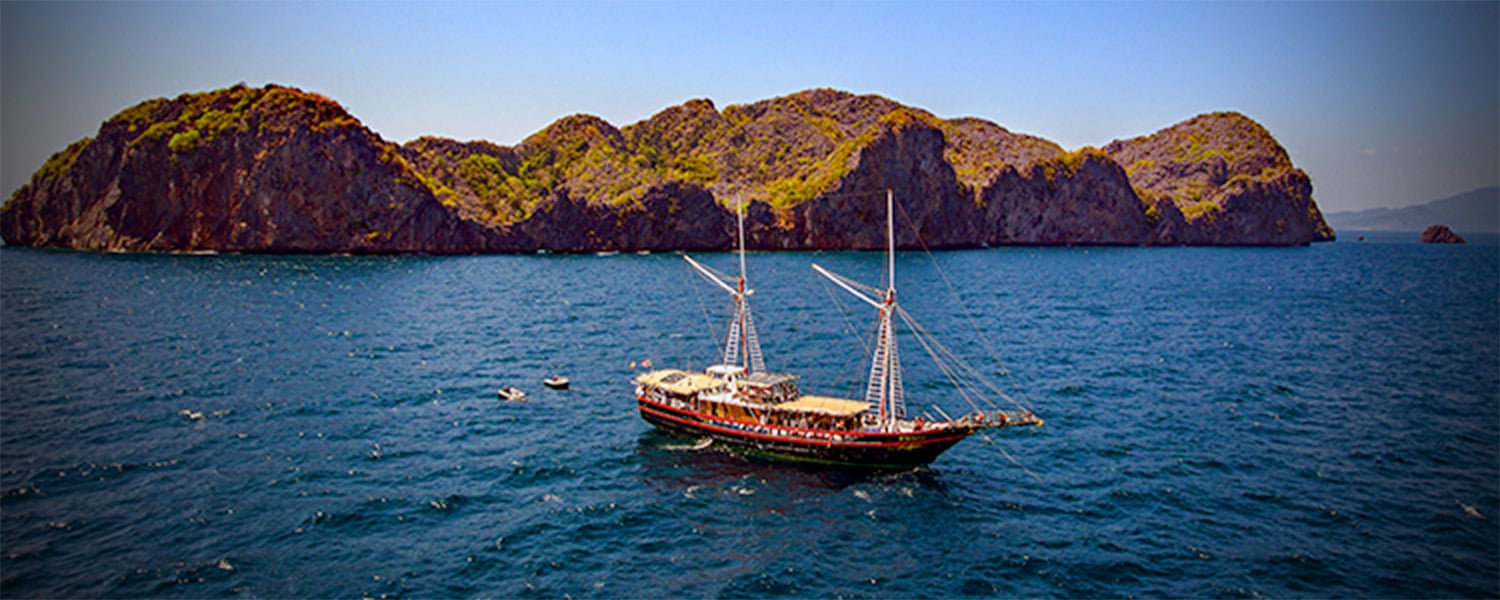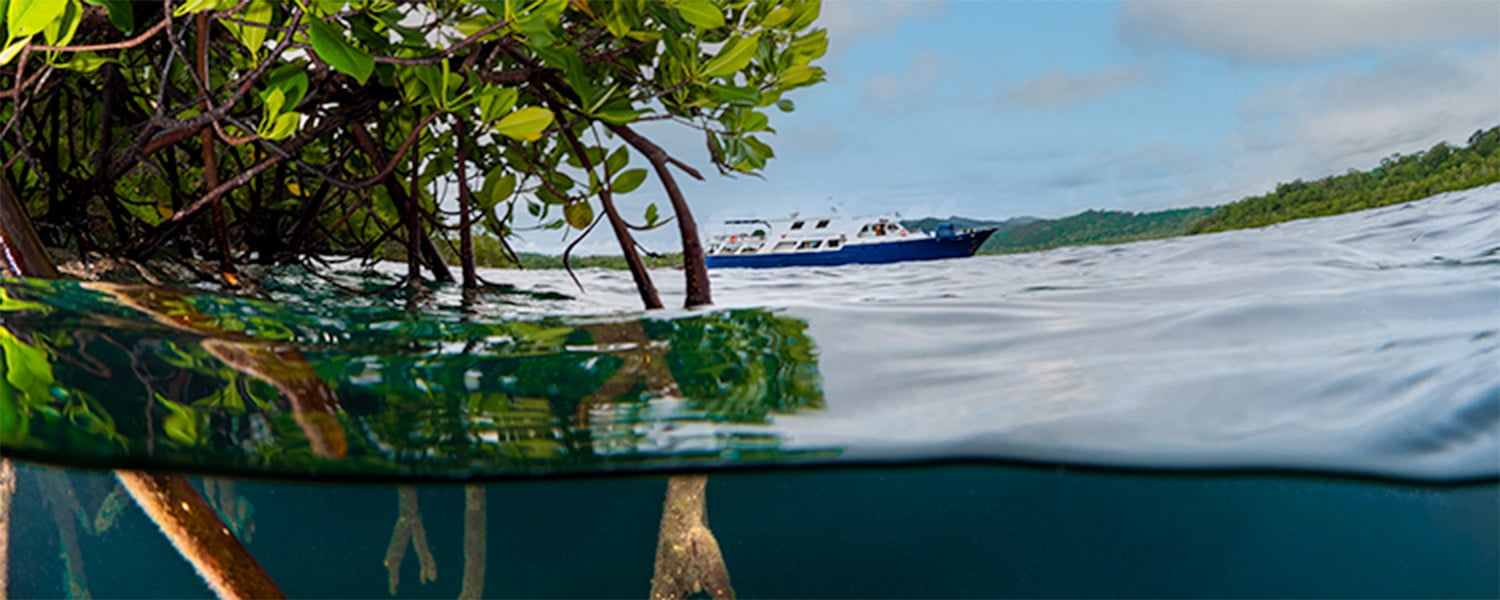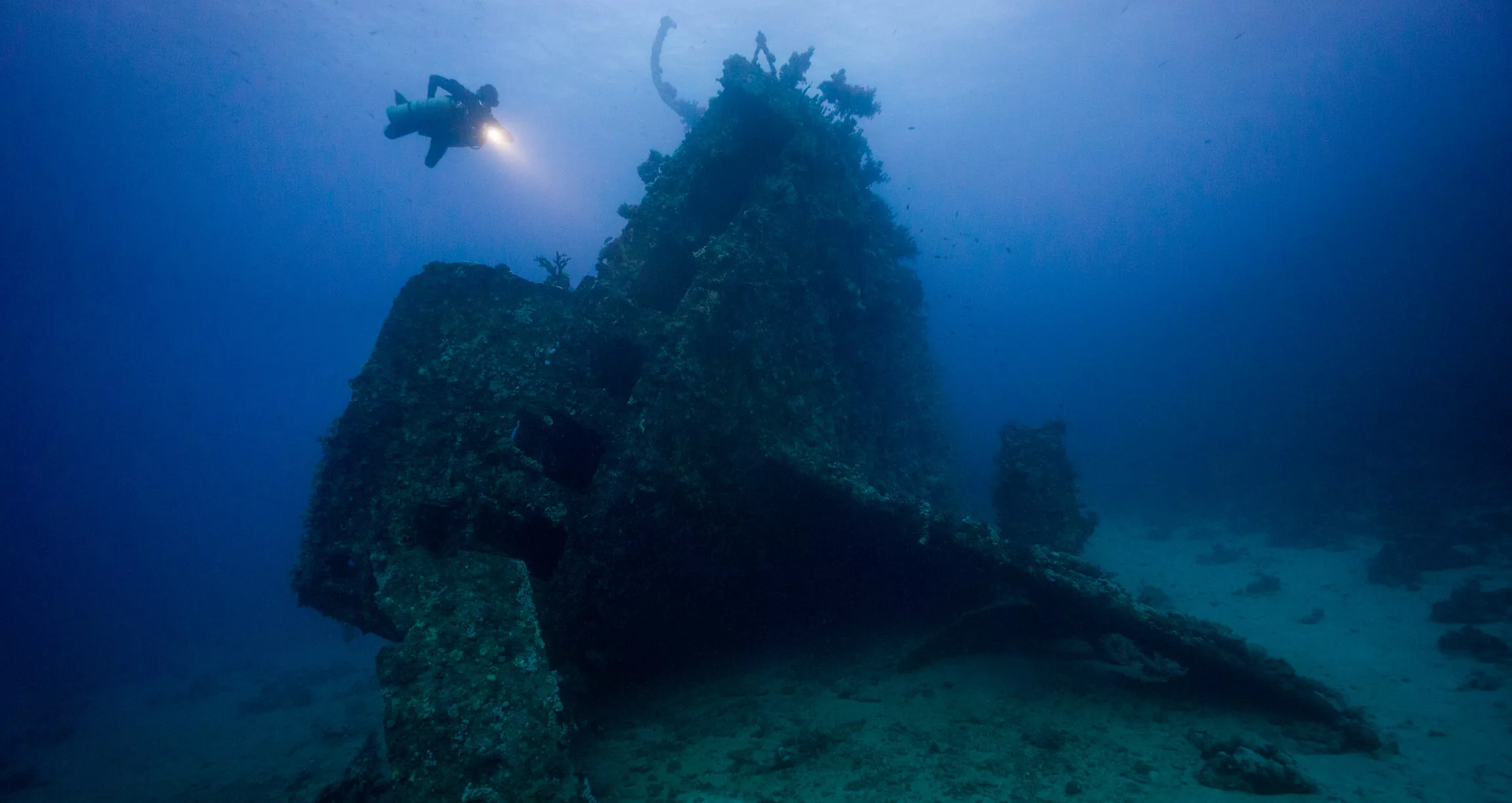A small swim for a hammerhead but a giant leap for marine research.
For the first time ever, scientists have found out where hammerheads go. They have documented, in near real-time, details of the migration of a critically endangered pregnant scalloped hammerhead shark (Sphyrna lewini).
The shark journeyed from the Galapagos Islands in Ecuador to Isla del Coco in Costa Rica. The distance was over 700 km, a journey that took 14 days.
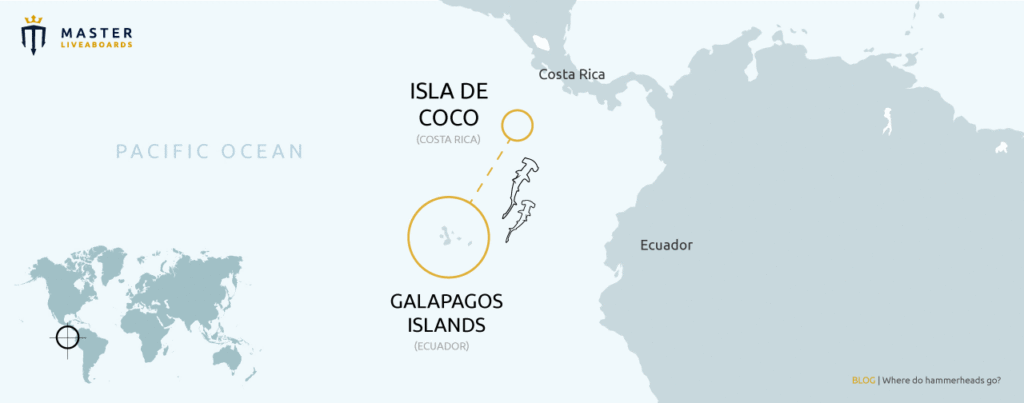
We know very little about shark migrations of any species. This is surprisingly true for a shark that gathers in schools that can number well over a hundred individuals. The scalloped hammerhead (Sphyrna lewini) is a species that lives primarily in warm, temperate, and tropical coastal waters.
The most recognisable feature of these sharks is of course the ‘hammer’ on the head. The eyes and nose of the shark are located at the tips of these extensions.
To date, there is still very little understanding of scalloped hammerhead migration patterns. We even largely do not know their general movements. An individual named Cassiopeia, though, is helping to fill in the blanks.
Cassiopeia is a 2.5 m long female scalloped hammerhead. The team tagged her with a satellite transmitter back in February 2021 at Darwin Island. The data collected showed that Cassiopeia left Darwin and travelled north for about 10 days.
She then turned East, finally reaching the waters of the Isla del Coco. Over her 14 day journey Cassiopeia covered around 700 km (390nm). This meant she travelled approximately 50 km per day (28 nm).

Why did scientists tag Cassiopeia?
The research is part of the Charles Darwin Foundation’s shark ecology project, the Galapagos National Park Directorate of the Ministry of Environment and Water, the Save Our Seas Foundation Shark Research Center, and the Guy Harvey Research Institute of the Nova Southeastern University (USA).
So far the project has managed to deploy 13 towed satellite tags and is in its second research year . The idea is to map the migratory routes of pregnant hammerheads.
The team hope to understand the life-cycle of a hammerhead from their nurseries. These are generally located in mangrove bays on the continental shores of central and south America.
What better way to do this than studying the migrations and population genetics of the world’s most famous and largest scalloped hammerhead shark aggregation.
We frequently encounter pregnant hammerheads in the Galapagos Islands. This primarily happens during the first months of each year.
′′These pregnant females are the most important group we need to protect. They attempt to dodge often illegal and unregulated fishing activity between Galapagos and their birthplaces on the continent “. So says Professor Mahmood Shivji, director of the Guy Harvey Research Institute and the Shark Research Center of the Save Our Seas Foundation at Nova Southeastern University.
What do we know about hammerhead migration and where they go?
Previous data has been compiled about scalloped hammerhead movements. These, though, were done using passive acoustic tags which are a lot less accurate and do not give precise routes. The use of towed satellite transmitters has allowed researchers to document the exact route and timing of this known migration. This is a first!
Revealing even this limited information on just one aspect of sharks’ lives and habitats has already opened the gateway to a flood of further questions that will need to be answered. Until then, everyone on the research team agrees that to understand the migration patterns would be a great step for the conservation of the species. Something is absolutely vital right now.
Latest estimates say that the population of these unique creatures has declined by 70% worldwide in the last 50 years. The IUCN Red List had Hammerhead sharks (both scalloped and great) added to in 2019. Both species are now classed as “Critically Endangered”. The IUCN recommends immediate action. Further research is needed to understand their trends.
What do the experts say?
“Better understanding the annual reproductive migrations of pregnant hammerhead sharks is vital to inform an urgently needed regional conservation approach aimed at reverting ongoing population declines across the Tropical Eastern Pacific” says Dr. Pelayo Salinas de León, Senior Marine Scientist at the Charles Darwin Foundation and Save Our Seas Foundation Conservation Fellow.
“Cassiopeia’s journey is not over yet: from Isla del Coco she still has to travel another 700 km or so to reach the continental coast where she will give birth to her babies within mangrove bays. Just imagine being 9 months pregnant, carrying 20-30 young, and having to swim over 1500 km, dodging thousands of fishing hooks and nets along the way…and then swim back! If we want to save the scalloped hammerhead shark from extinction, we really need to protect these superhero mums as they migrate across the region” adds Salinas-de-León.
Marcelo Mata, Minister of Environment and Water, says that ′′From this state portfolio we will always boost this kind of actions that encourage scientific research, for the benefit of our biodiversity throughout Ecuadorian territory“.
For Danny Rueda, director of the Galapagos National Park, ′′the contributions of these research are critical to boosting the adoption of regional policies that protect these routes, which function as marine corridors of species considered critically endangered as the case of hammerhead sharks “.
